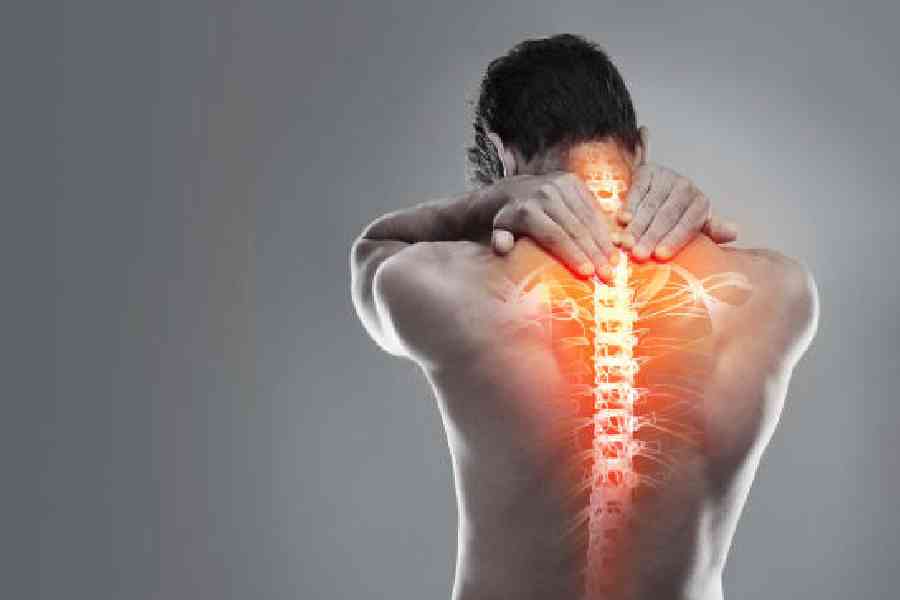As we age, our bodies break down more bone tissue than they build. This can increase the risk of osteoporosis, a condition defined by weak, brittle bones, which can make them more susceptible to breaks and fractures. And for older adults, the results can be devastating — fractured bones may give way to lengthy hospital stays, disability or even death.
The prime time to build bone is during adolescence. And while your age, gender and genetics play significant roles in bone health, there are ways to slow bone loss in midlife and beyond. Exercise is a major part of this, but your diet is a big player, too, said Bess Dawson-Hughes, a professor and senior scientist at the USDA Nutrition Center at Tufts University in the US.
Here are some nutrients to prioritise to keep your bones healthy as you age.
Calcium
When you don’t get enough calcium from food, your body will pull the mineral from your bones, which can make them weaker, said Sue Shapses, a professor of nutritional sciences at Rutgers University, US. According to the US National Institutes of Health, women aged 19 to 50 need 1,000 milligrams of calcium each day, and if they’re 51 or older, they need 1,200 mg. Men aged 19 to 70 need 1,000 mg, or 1,200 mg if they’re older.
If possible, it’s best to meet these recommendations with your diet rather than with supplements. Dairy products like milk and yogurt are excellent sources of calcium, said Connie Weaver, a research professor at San Diego State University in the US, who studies how diet influences bone health. One cup of low-fat Greek yogurt, for example, contains about a quarter of the calcium most people need in a day.
Vitamin D
Vitamin D is crucial for maintaining strong bones because it helps your body absorb calcium from food. It is synthesised in the skin after it is exposed to the sun’s ultraviolet B rays. But the skin’s ability to do this synthesising declines with age, Dawson-Hughes said. Certain Vitamin D-rich foods can help make up for that loss. These include rainbow trout, salmon, canned tuna, mushrooms, egg yolks and milk.
Those between the ages of 1 and 70 need 600 IU (inter- national units) per day, and those 70 and older need 800 IU every day. But it’s challenging for most people to reach those requirements with food alone, Shapses said.
Recent research suggests that Vitamin D supplements do not reduce the risk of fractures, so experts recommend consulting a doctor, who can advise whether Vitamin D supplements are right for you.
Protein
Protein makes up about half of bone volume and is essential for replacing bone when it is lost. But since protein plays two roles in the body — helping to absorb calcium in the gut and to excrete it in urine — you need to maintain sufficient levels of both protein and calcium for good bone health, said Shivani Sahni, an associate professor at Harvard Medical School in the US.
In one 2021 study of more than 7,000 older adults in senior living centres in Australia, those who consumed 3.5 servings of dairy (high in both calcium and protein) per day for two years had 33 per cent fewer fractures than those who consumed only two servings per day. That’s similar to the effect of some osteoporosis drugs intended to reduce fracture risk, the study’s authors noted.
Other vitamins and minerals
Diets that incorporate a variety of fruits and vegetables, like the Mediterranean and DASH diets, can help support bone health, too, Sahni said. Leafy greens, fruits, nuts and legumes, for example, are rich in magnesium and potassium, which both support healthy bones. “Increasing the variety of foods you consume is one of the best ways to influence your bone health,” said Kelsey Mangano, an associate professor at the University of Massachusetts, US, who studies nutrition and musculoskeletal ageing.
In a 2022 study of 235 postmenopausal women, those who ate four to six prunes per day for one year were less likely to lose hip bone mineral density than those who ate none. A small trial of 13 postmenopausal women found that those who consumed 17.5 grams of freeze-dried blueberry powder (equivalent to three-quarters of a cup of blueberries) for six weeks retained more bone calcium.
Weaver, who was an author on the blueberry and prune studies, said that although the blueberry study had few participants, the results were “statistically significant and about a quarter as effective as hormone replacement therapy, but without the side effects”.
But, she added, it’s hard to say if these benefits were a result of the fruit itself, the fibre or something else, like the gut microbiome of the person eating the fruit. “There’s a lot to be learned,” she said.
NYTNS











